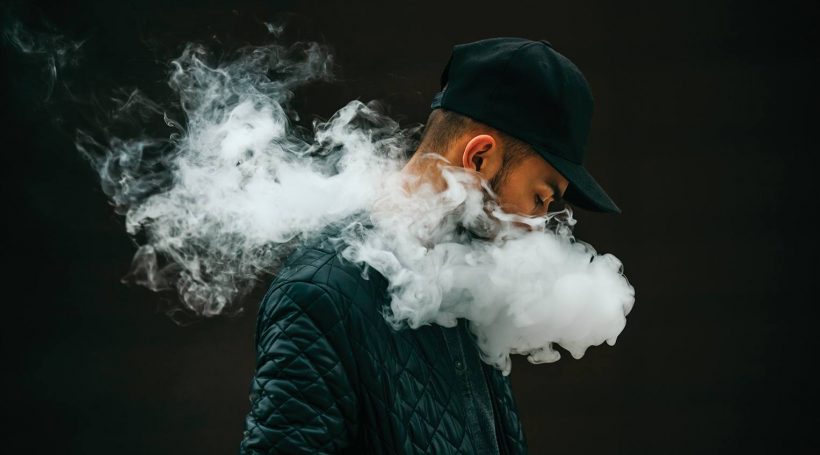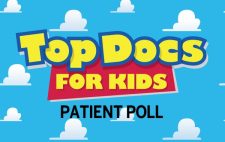 After decades of anti-smoking campaigns, teens were finally saying no to smoking — it was no longer cool to sneak cigarettes on the school yard. But times change, and now vaping is blowing up those messages. Many teens say they simply don’t believe the experts who warn e-cigarettes have health risks. So a new smoking-crisis has risen from the ashes. And educators are scrambling to start another campaign to teach teens the dangers of smoking.
After decades of anti-smoking campaigns, teens were finally saying no to smoking — it was no longer cool to sneak cigarettes on the school yard. But times change, and now vaping is blowing up those messages. Many teens say they simply don’t believe the experts who warn e-cigarettes have health risks. So a new smoking-crisis has risen from the ashes. And educators are scrambling to start another campaign to teach teens the dangers of smoking.
Although he usually avoids the bathroom in between classes, Angel, 14, decided to take the risk recently. But no sooner did the high-school freshman duck into the boy’s laboratory, he quickly backed out – once again reminded why he stays away.
“There were clouds of smoke everywhere, and it smelled like a bunch of fruits combined,” he recalls, describing clusters of kids vaping, or inhaling hits off of electronic cigarettes (e-cigarettes). “I was like ‘I am not dealing with this.’”
Angel says that’s typical at Bordentown High School, where e-cigarette smoking is banned but it’s a policy not easily enforced. However, his experience could have taken place in any high school in South Jersey, or Anytown USA for that matter. Decades after anti-smoking campaigns targeting teens tipped the scales, schools are now scrambling to deal with vaping: the new smoking-related health crisis. For veteran educators and health advocates, it feels like deja-vu – but with a dangerous, modern makeover. Even as they’re aggressively ramping up campaigns to combat the new e-cigarette craze, they fear a new generation is already on the path to addiction.
“Kids that were already saying no to drugs and smoking are getting trapped,” explains Jennifer DiStefano, student assistance counselor at Cherry Hill East. “And it cuts across all types of students. Even highly educated kids who know the harmful effects are engaging in it. They put it low on their list of priorities of what is harmful and are surprised by how quickly they’re becoming addicted.”
The plumes of smoke and fruity fragrance are the trappings of e-cigarettes. But, unlike conventional cigarettes, the residue doesn’t linger very long. That’s because e-cigarettes don’t burn tobacco leaves. In fact, they look nothing like their flammable kin – and it’s by design. If you didn’t know what they’re used for (and many parents and teachers had no clue until recently) you’d think they were high-tech school supplies.
The brand Juul, a dominant player in the market since 2015, resembles a flash drive. The small, slick devices contain a built-in heating device that, when activated, heats up a mixture of nicotine, a chemical called benzoic acid and flavored water that turns into an aerosol. When users inhale, they get a quick and intense burst of perfumed nicotine. The mixtures are sold in the form of pods (like laundry detergent only much smaller) and come in kid-pleasing flavors like mango, fruit medley, mint and creme brûlée.
Teens are attracted to the flavors, but get hooked on the nicotine, says Cathy Butler-Witt, assistant director of public health programs with the Southern New Jersey Perinatal Cooperative. That’s because one Juul pod contains as much nicotine as a pack of cigarettes. Studies have proven that nicotine, which activates areas of the brain involved in feelings of pleasure, is highly addictive. Developing minds are particularly susceptible to the effects. And although the flavoring is generally recognized as safe for use in foods, the effects of inhaling such substances are largely unknown. There is evolving evidence that vaping causes irreversible lung damage and disease, according to the American Lung Association. Also, e-cigarettes are still considered tobacco products because the nicotine derives from tobacco.
“It doesn’t take a lot of use for kids to become addicted to nicotine,” says Butler-Witt, who has presented widely about vaping to educators, parents and children in South Jersey schools. “The question now is what else will they start to use.”
When e-cigarettes debuted around 2010, they were marketed to help smokers wean off tobacco products. For that, the products have won over admirers. However, when Juul hit the internet and retail stores in 2015, the market expanded. The first e-cigarette brand to rely heavily on youth-oriented social media, YouTube videos and diverse young models, Juul also offered back-to-school specials. It kept people on their toes with pop-up “Juul bars” at youth-oriented events and its catchy #Vaporized campaign. Like commercials for cigarettes of yesteryear, the message was never spelled out but easily understood: vaping is fun and cool, says Butler-Witt.
Seemingly overnight, “juuling” became a verb and teens previously in the decidedly “smoking isn’t cool” camp became fans, reversing years of declining rates of teen smoking. There are more than 3.6 million middle and high school students who identified as current users, according to the latest National Youth Tobacco survey.
In the fall, just as the school year was ramping up, the FDA declared that teen use of e-cigarettes has hit “an epidemic proportion.” It put Juul and other manufacturers on notice they needed to prove they could keep their products away from minors. Juul Labs, which denies that it ever sought to attract teens, has curbed its advertising campaigns, focusing strictly on older people, particularly those who want to quit conventional cigarettes. It recently announced a $30 million prevention campaign to target youths, including a push at state and federal levels to raise the minimum purchase age for all nicotine products to 21. (New Jersey is already ahead of the pack, having upped the age from 19 in 2017.)
Most South Jersey schools have already updated smoking policies to include the ban of e-cigarettes. The state department of health provides materials and training for retooling the smoke-free education campaigns they are seeking out. Dovetailing the national trends, educators here say they started picking up on vaping about three years ago. But the momentum exploded over the past two years and shows no signs of letting up, they say.
“This year I’ve encountered kids as young as sixth grade juuling,” says Adam Edwards, a school resource officer for Bordentown schools. “It’s running rampant but it’s hard to catch. The smell goes away quickly and students are learning different ways to hold in the vape so it doesn’t produce a lot of smoke.”
When he does catch students in the act, their e-cigs and pods are confiscated and parents informed. Offenders typically are put to work on community service projects helping the custodians clean up school grounds. They’re also tasked with researching the effects of vaping and writing a paper about the dangers for Edwards, who is a Bordentown police officer.
“But a lot of them don’t believe it,” he says. “They’ll write the paper and go back to vaping.”
Edwards says he’s having more success reaching the middle-schoolers. And it’s helping that high schoolers, involved with the school’s Peer to Peer program, are also reaching out to the younger kids with similar messages. Peer to Peer received a $1,000 mini-grant from the New Jersey Department of Health last year to help spread the word.
“At the end of the day, education is the best we can do,” he says. “It’s up to the parents as well.”
One of the ways educators are finding success reaching students is through comparisons to the history of tobacco companies, which marketed products to youth with scented flavors, cartoon characters, themes of rebellion and the use of youthful models until lawmakers cracked down. As information about the dangers of smoking became known and lawsuits against big tobacco companies mounted, the industry started self-policing itself and coming up with its own campaigns to discourage teen smoking, notes DiStefano.
“It feels like where we were when I first started in the school district 21 years ago,” she says. “We were really combatting cigarette smoking back then. We were running lots of anti-smoking and anti-tobacco programs.”
In a way, smoking back then was easier to curve because, as glamorous as the ads made it out to be, there was a tangible, ugly effect and strong evidence that it led to lung cancer.
“People realized your teeth got yellow, your clothes smelled and then second-hand smoke became a huge issue,” she says. “Because this is so new, and it will take years before the data shows the health effects of vaping, many teens feel we are just making this up.”
VAPING BY THE NUMBERS
Over 3.6 million youth are current users.
1.5 million more students used e-cigarettes in 2018 compared to 2017.
E-cigarettes have been the most commonly used nicotine product among teens since 2014.
Overall tobacco use among teens increased in 2018 from 2017:
27 percent among high school students and 7.2 percent by middle-schoolers.
Young adults who use e-cigarettes are 4 times as likely to start smoking conventional cigarettes within 18 months than their peers who don’t vape.
HOW TO TALK TO TEENS ABOUT VAPING

Before the talk
Get credible information at e-cigarettes.surgeongeneral.gov.
Avoid criticism and encourage an open dialogue.
Remember your goal is to have a conversation, not to deliver a lecture.
It’s OK for the talk to take place over time, in bits and pieces.
Set a positive example by being tobacco-free.
Start the conversation
Instead of saying“we need to talk,” ask what he or she thinks about a situation, such as seeing someone vaping in person or in a video.
Not sure where to begin? Ask your health provider for help.
Be prepared to answer these questions:
Why don’t you want me to use e-cigarettes?
What’s the big deal about nicotine?
Aren’t e-cigarettes safer than conventional cigarettes?
You use tobacco, so why shouldn’t I?













